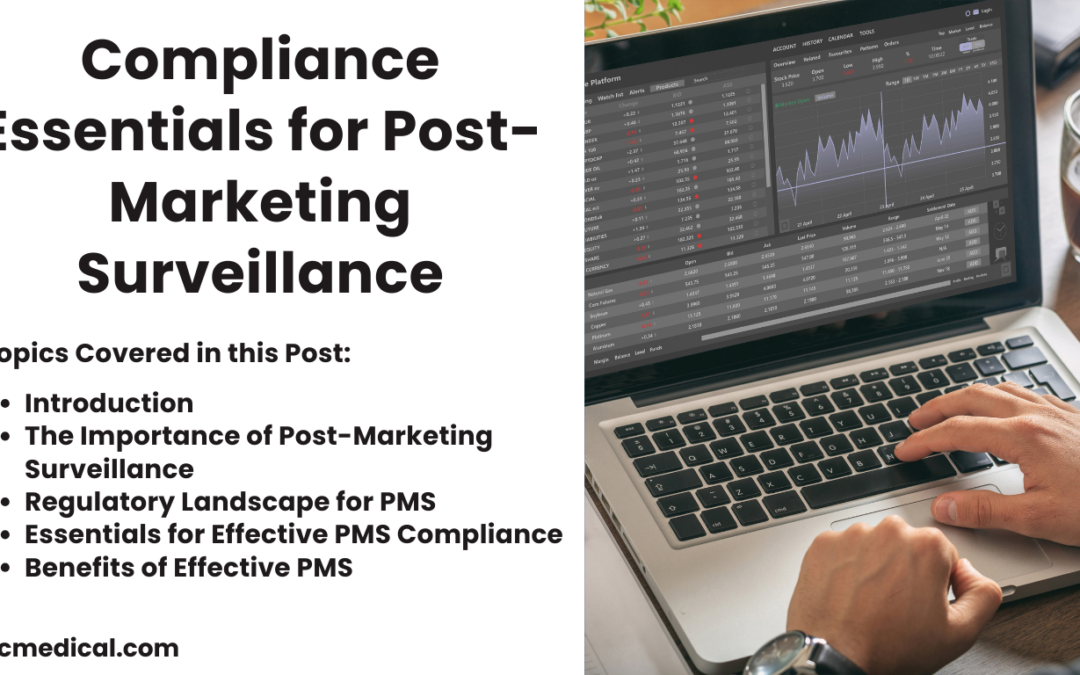The medical device industry thrives on innovation, but ensuring patient safety remains paramount. Regulatory compliance, particularly in post-marketing surveillance (PMS), is crucial for safeguarding patients and maintaining market access.
This article explores the essentials of navigating regulatory requirements for medical devices, focusing on effective PMS practices.
The Importance of Post-Marketing Surveillance
Unlike pre-market testing, post-marketing surveillance monitors a device’s performance in real-world clinical settings. This ongoing data collection allows for the identification of potential safety issues, unforeseen side effects, or long-term performance changes that pre-market testing might have missed.
Early detection enables manufacturers to take corrective actions, such as issuing safety alerts or initiating product recalls, minimizing patient risk.
Regulatory Landscape for PMS
Regulatory bodies worldwide enforce strict post-marketing surveillance requirements. Key players include the US Food and Drug Administration (FDA) and the European Medicines Agency (EMA), with their respective regulations – the FDA’s 21 CFR Part 820 and the EU Medical Device Regulation (MDR).
These regulations outline the framework for post-marketing surveillance activities, including:
1. Risk Management
A robust risk management plan forms the foundation of post-marketing surveillance. It identifies potential hazards associated with the device and establishes a system for monitoring, investigating, and reporting adverse events.
2. Complaint Handling
Manufacturers must have a system for receiving, documenting, investigating, and trending complaints related to the device’s performance or safety.
3. Periodic Safety Update Reports (PSURs):
These reports, submitted to regulatory bodies at specified intervals, summarize the collected PMS data on the device’s safety profile.
Essentials for Effective PMS Compliance
1. Proactive Planning
Develop a comprehensive PMS plan well before market launch. This plan should define data collection methods, timelines for reporting, and communication strategies for handling adverse events.
2. Data Collection & Analysis
Establish a robust system for gathering real-world data on the device’s performance. This may involve leveraging various sources like healthcare provider reporting, patient registries, and claims data analysis.
3. Trend Monitoring & Analysis
Regularly analyze collected data to identify trends or patterns in adverse events, device malfunctions, or unexpected use cases. Early detection of potential risks allows for timely intervention.
4. Transparency & Communication
Maintain open communication with regulatory bodies and healthcare professionals. Promptly report serious adverse events and keep stakeholders informed of any safety concerns or corrective actions taken.
5. Maintaining Documentation
Meticulously document all post-marketing surveillance activities, including data collection, analysis, reporting, and corrective actions. This documentation shows your commitment to patient safety and regulatory compliance during audits.
Benefits of Effective PMS
A well-designed and implemented post-marketing surveillance program offers numerous benefits:
1. Enhanced Patient Safety
Early detection and mitigation of potential risks associated with the device ultimately leads to improved patient safety.
2. Improved Device Performance
PMS data provides valuable insights into a device’s long-term performance in real-world settings. This information can be used to refine the device design and improve its effectiveness.
3. Competitive Advantage
Demonstrating a commitment to patient safety through robust PMS practices fosters trust and credibility among healthcare professionals and patients. This can lead to a competitive edge in the marketplace.
